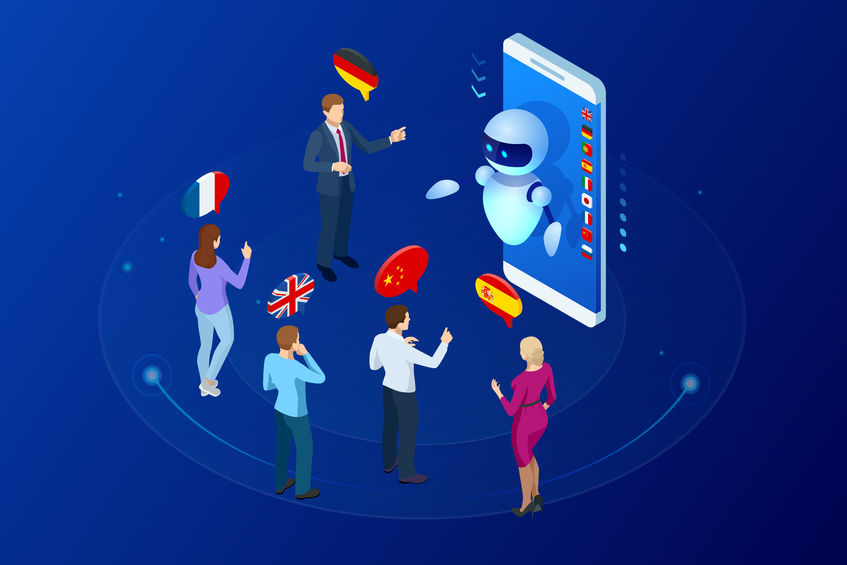Revolutionizing Retail: The Emergence and Impact of Commerce Chatbots
In today’s fast-evolving global marketplace, businesses are constantly seeking innovative ways to stay ahead. A key player in this arena is the chatbot, a technology rapidly transforming customer interaction and multilingual communication. This comprehensive guide delves into the journey and significance of chatbots in modern business, highlighting their evolution, applications, and future prospects.
The Evolution of Chatbots: From Simple Scripts to AI Pioneers
- Early Days (Rule-based Chatbots): Initially, chatbots operated on simple, predefined rules. They could handle basic queries but lacked depth in understanding or responding to complex inquiries.
- Growth through Machine Learning and NLP: The introduction of machine learning algorithms and natural language processing (NLP) techniques marked a significant leap in chatbot development. These chatbots began to understand and respond to nuanced language patterns more effectively.
- The Age of AI and Voice Recognition: Recent advancements have birthed AI-powered and voice-enabled chatbots. Technologies like BERT and GPT have enhanced their capabilities, making interactions more human-like. Voice assistants like Google Assistant and Amazon Alexa epitomize this evolution, offering intuitive voice-command interactions.
Case Studies: Real-World Impact of Chatbots in Business
Dominos: Ordering a delicious pizza online is a long process. The confusion mostly arises while explaining detailed customizations and describing addresses. Instead of arising this confusion, Dominos wants to build and deploy AI-based order-placing bots on their official website and Facebook page. These kinds of commerce chatbots allow users to place orders seamlessly and makes interaction hassle-free.
Eat Easy: Dubai-based food delivery app, EatEasy has built its customer support chatbot and integrated it within the app with 2 language options: English and Arabic. This chatbot can address customer queries in the following areas:
Placing orders
-
- Adding restaurants
- Knowing about Eat Easy Points
- Payment issues
- Order tracking
- Order issues
Chatbots and Multilingual Businesses: Breaking Language Barriers
- Enhanced Customer Support with Multilingual Capabilities: Modern chatbots are revolutionizing customer service by providing timely and efficient assistance in a variety of languages. This global approach significantly boosts customer satisfaction, as it caters to a diverse, international clientele. By interacting in the user’s preferred language, these chatbots ensure a more comfortable and effective communication experience.
- 24/7 Availability Across Time Zones: One of the standout features of these advanced chatbots is their round-the-clock service. This ensures that no matter the time zone or hour, customers can receive consistent and reliable support. This aspect is particularly beneficial for businesses with a global reach, as it guarantees uninterrupted customer service.
- Data-Driven Personalization: These chatbots excel in analyzing extensive user data to understand and adapt to individual preferences. This ability to tailor interactions based on customer behavior and history plays a crucial role in building customer loyalty. Personalized experiences make customers feel valued and understood, fostering a stronger connection with the brand.
- Cost-Effective Solutions for Businesses: Automating multilingual communication with chatbots substantially reduces the need for a large, diverse customer support team. This not only lowers operational costs but also streamlines the customer support process, making it more efficient and manageable.
- Real-Time Translation for Seamless International Business: Chatbots equipped with real-time translation features are invaluable in international business contexts. They bridge communication gaps that often arise in cross-cultural interactions, facilitating smoother and more effective collaborations. This capability is essential for companies looking to expand their global footprint, as it allows them to engage with international partners and customers more effectively.
Challenges and Ethical Considerations in Chatbot Deployment
Adopting chatbots comes with its set of challenges. Key among these are ethical considerations like ensuring data privacy while personalizing experiences. Additionally, integrating chatbots with existing business systems and technologies requires careful planning and execution. Businesses must prioritize ethical AI practices to maintain a balance between user privacy and personalization.
Conclusion: Embracing the Future with AI-Enhanced Communication
The evolution of chatbots from basic, rule-based systems to sophisticated, multilingual tools signifies a major technological leap in business communication. As global interactions become the norm, integrating advanced chatbots is crucial for success. The future promises vast opportunities for businesses that adapt to and integrate these AI-powered communication tools, paving the way for a more connected and efficient global business environment.





